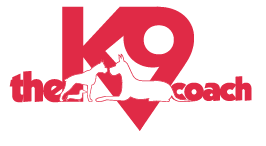5 More Common Dog Training Mistakes
We all make dog training mistakes. Many of these mistakes are extremely common. Nearly, everyone who starts working with us is making these mistakes. And sometimes they are difficult habits to break. But , when you become aware and make an effort to change, you’ll see big results with your dog.
Feeling like your dog training is at a plateau? Not really able to get the fine-tuning you need? Take a look at these common issues the next time you train…
Eye contact- Stop staring at your dog, hoping he’s going to do something different, or willing him to get it right this time. Your direct eye contact can actually cause your dog to break his command. You should keep an eye on him, just don’t stare.
Body Language– Do you often find yourself bending over too much? Wiggling your body around so Fido can “see you”. Snapping your fingers. Dancing around changing positions and trying to physically position your dog. Changing your body language is as easy as being still! Stillness is key for a dog to be successful! Your body language sets the tone for leading your dog effectively. Stand up tall, shoulders back, calm energy, and project confidence.
Tow barring (wrong use of leash)- When walking our dogs we don’t want our leash to become a brake or yanking them around on turns, or hoisting them up into a sit. Stop using the leash. Seriously. Attach it for safety, of course, but stop using it to guide your dog after you have taught commands. The more your dog has to think for himself and problems solve the difference between correction and reward/praise the stronger his learning retention will be. Stop doing the work for him.
Praise is wrong- Ever notice that some dogs are way too excited for their own good? With dogs like these, we need to bring it down a notch. Just a simple “good job!” will suffice (no pet or flailing). For dogs that lack confidence, we need to take it up a notch and be excitable. Make them feel like they won a gold medal. We also need to make sure we are praising at the right moments and for the right behaviors. It’s easy to point out errors, most people don’t point out accuracy or effort often enough.
Praise and Play! At the end of a series or commands and at the end of every training session, release your dog from command and praise and play in a big way to celebrate your work, your relationship and the joy have having a dog.
Correction- What is a correction? Correction is a negative marker that comes in between issuing a command and saying the command again. It will always be a verbal “no”. It may be paired with a leash pop correction, an ecollar if you’re trained to use one, etc. Repeating yourself Saying “sit, sit, sit” doesn’t work, unless you want to say it three times every time! Make sure you are correcting at the right moments and not accidentally correcting for proper behavior. Corrections change behavior — so if you’re struggling with the same errors, you need to change something — and it might be you.
Get out there and train your dog! If you feel you need professional help, we’re here to help. Quick questions can be asked on FB, we can set up a phone consult for more in-depth discussions, or a series of lessons for more difficult issues.
Good Luck!

